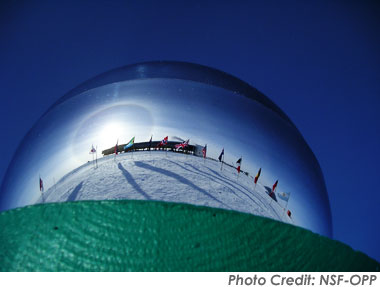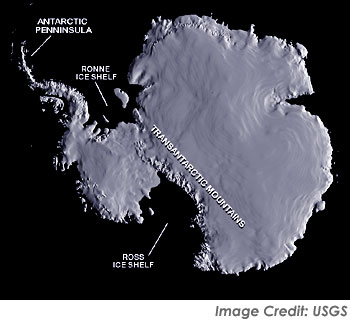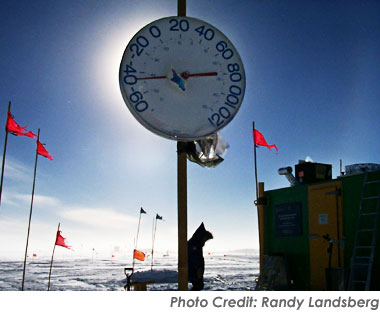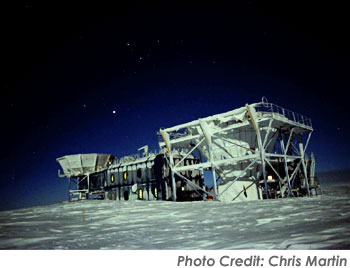|
|
 SOUTH POLE SOUTH POLE
 WHY IS THE TELESCOPE AT THE SOUTH POLE?
WHY IS THE TELESCOPE AT THE SOUTH POLE?
|
| |
 | QUICK ANSWER |
|
 |
|
| |
 Because the South Pole is probably the best place on Earth for this telescope. It is extremely dry, making the atmosphere exceptionally transparent for SPT.
Because the South Pole is probably the best place on Earth for this telescope. It is extremely dry, making the atmosphere exceptionally transparent for SPT.
|
| |
 | SOLUTION |
|
 |
|
| |
 The South Pole lies on a plateau at a high altitude (almost 2 miles), elevated above much of the normal water vapor in the atmosphere. The extremely cold weather also reduces water vapor in the air. You may have experienced this phenomenon if you have been in Chicago, or a similarly cold place, in the winter. You probably noticed that the air was dry, the sky was clear, (and lip balm was a necessity!). The South Pole is much colder and thus much drier then Chicago. These desert-like conditions make the South Pole a great site for a millimeter/sub-millimeter telescope.
The South Pole lies on a plateau at a high altitude (almost 2 miles), elevated above much of the normal water vapor in the atmosphere. The extremely cold weather also reduces water vapor in the air. You may have experienced this phenomenon if you have been in Chicago, or a similarly cold place, in the winter. You probably noticed that the air was dry, the sky was clear, (and lip balm was a necessity!). The South Pole is much colder and thus much drier then Chicago. These desert-like conditions make the South Pole a great site for a millimeter/sub-millimeter telescope.
|
| |
 The South Pole's unique position on the globe makes it an even more extraordinary site for this telescope. During the winter, sunshine does not reach the South Pole; nighttime (or daytime in the summer) extends for months. The lack of daily sunsets and sunrises makes the atmosphere extremely stable.
The South Pole's unique position on the globe makes it an even more extraordinary site for this telescope. During the winter, sunshine does not reach the South Pole; nighttime (or daytime in the summer) extends for months. The lack of daily sunsets and sunrises makes the atmosphere extremely stable.  Conducting observations in the winter also removes another contaminant to millimeter/sub-millimeter observations - the sun. All these factors conspire to make the South Pole the perfect place for the South Pole Telescope. Conducting observations in the winter also removes another contaminant to millimeter/sub-millimeter observations - the sun. All these factors conspire to make the South Pole the perfect place for the South Pole Telescope.
|
| |
|
|
 SOUTH POLE
SOUTH POLE